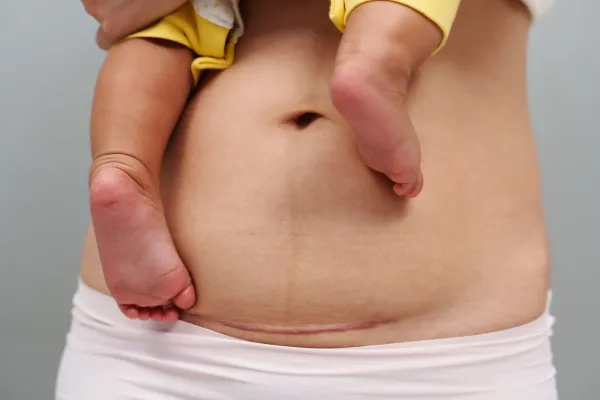
Scar Tissue 101: Healing Inside and Out After Birth
Let’s talk about scars, mama.
If you’ve had a baby, you probably have a scar story—whether it’s from a C-section, a perineal tear, or an episiotomy.
Some stories are short and sweet. Others are long and layered, with twists, turns, and maybe even a few plot holes your doctor didn’t quite fill in.
Here’s the thing: scar tissue isn’t just skin deep. It’s a whole-body, whole-mind situation. And if it’s ignored, it can sneakily affect your comfort, movement, and confidence in ways you might not expect.
So, let’s pull back the curtain on what’s really going on under the surface… and how you can heal both inside and out.
What scar tissue actually is (and why it matters)
Think of scar tissue like the body’s fast-track patchwork system. It’s your skin and connective tissue rushing to close the gap after an injury or surgery.
The problem? This repair job isn’t always neat and tidy. Scar tissue fibers are laid down quickly and haphazardly—more like a messy spider web than the smooth weave of healthy tissue.
And that “messy weave” can lead to:
Tightness or pulling around the scar
Pain with movement (or intimacy)
Changes in posture
Difficulty engaging your core muscles
Numbness or hypersensitivity in the area
In other words: it’s not “just cosmetic.” It’s functional.
C-section scars: More than meets the eye
C-section scars can be sneaky. On the surface, they’re just a thin line low on your belly. But underneath? Layers of tissue—including muscle and fascia—may be affected.
Adhesions (when tissues stick together) can limit your range of motion, make certain positions uncomfortable, or even contribute to back and hip pain.
Pro tip: Gentle scar mobilization from a skilled pelvic health physical therapist in Greer, SC (like our team at Body Works Women’s Health & Wellness) can help soften adhesions and restore mobility.
Perineal scars: The hidden healers
Tears, episiotomies, and stitches in the perineum can lead to scar tissue that affects how your pelvic floor muscles function.
This can cause:
Discomfort during intimacy
A feeling of heaviness or pulling
Trouble fully relaxing or engaging your pelvic floor
Here’s the hopeful part: with the right hands-on techniques, guided exercises, and patience, you can restore function and comfort.
Healing from the inside out
True scar healing isn’t just about the physical tissue—it’s about reconnecting with your body and feeling safe, strong, and supported again.
Our approach at Body Works Physical Therapy Greer SC:
Assessment: We listen to your story, check mobility, and look for signs of restricted movement.
Manual therapy: Gentle hands-on work to soften and mobilize scar tissue.
Movement retraining: Exercises that help your body move freely without compensation.
Self-care tools: Teaching you how to safely work on your scar at home.
Whole-person support: Addressing emotional connections to your scar, because healing isn’t just physical.
How to start loving (or at least liking) your scar again
Touch it: Once cleared by your healthcare provider, start gently touching and massaging your scar to desensitize the area.
Breathe into it: Deep belly breaths can help mobilize tissues from the inside.
Move with intention: Light stretching and pelvic floor exercises can improve circulation and flexibility.
Ask for help: Scar tissue therapy is not a DIY-only project—professional guidance matters.
You don’t have to “just live with it”
Mama, your scar is part of your story—but it doesn’t have to define your comfort, mobility, or confidence.
If you’re feeling tightness, pain, or just not quite “yourself” after birth, our Greer SC physical therapy clinic is here to help you heal fully—inside and out.
Your next chapter? One where you move freely, feel strong, and see your scar not as a roadblock… but as proof of your strength.
📅 Ready to feel like yourself again? Schedule your scar assessment with our team at Body Works Women’s Health & Wellness.



